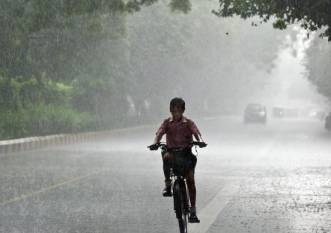NEW DELHI, 4 July 2025: For decades, India’s southwest monsoon has been the nation’s dependable seasonal heartbeat, delivering nearly 75% of its annual rainfall and sustaining millions of farmers. But climate change is shaking this certainty.
A growing body of research, including recent data from the Council on Energy, Environment and Water (CEEW), shows India’s monsoon is no longer predictable. “CEEW research shows that India’s monsoon is becoming more variable not just in its onset and duration but also in how rainfall is distributed across regions and months,” said Vishwas Chitale, Senior Programme Lead at CEEW.
Over the past decade, the changes have been striking. About 55% of India’s tehsils recorded more than a 10% increase in southwest monsoon rainfall. But the flipside is worrying: 11% of tehsils, mainly in vital agricultural areas such as the Indo-Gangetic plains, the northeast, and the Himalayas, saw significant declines. Of these, 87% of the rainfall reductions took place in June and July, the critical sowing window for kharif crops including paddy, maize, and pulses.
At the same time, October rainfall has risen sharply, with nearly half of Indian tehsils experiencing a 10% or more increase, suggesting a delayed monsoon withdrawal. On top of that, 64% of tehsils now see more days of heavy rainfall, raising concerns about floods and soil erosion.
The impact on agriculture could be profound. “Farmers rely on June-July rainfall for timely sowing,” Chitale explained. “When that is disrupted, it ripples through the entire harvest cycle, potentially reducing yields and pushing farmers into debt.”
Water security and rural infrastructure are also under strain. Storage tanks, canals, and flood management systems built for predictable monsoons are being overwhelmed or rendered ineffective as rainfall becomes more extreme and erratic.
India’s vulnerability is compounded by its vast rural workforce, with nearly 46% of its population dependent on agriculture for their livelihoods. Disruptions to sowing, harvesting, and irrigation threaten incomes, food security, and even social stability in already fragile communities.
Chitale warns that reactive adaptation will no longer suffice. Instead, India needs “localised climate risk assessments, updated crop calendars, and resilient water and infrastructure systems that can respond to both increases and reductions in rainfall.”
Some steps are already being considered. The agriculture ministry is exploring dynamic crop calendars to match the shifting monsoon. Early warning systems are being improved through partnerships with weather tech providers, while climate-intelligent irrigation projects are under review in several states.
However, experts caution that these moves are too small for the scale of disruption India faces. “The monsoon’s mood swings are no longer anomalies,” Chitale said. “They’re the new norm. If we don’t rethink our entire agricultural and water management system, we will face repeated crises.”
He points out that precision agriculture, decentralised water storage, and climate-smart seeds are essential, but must be supported by policy reforms, farmer training, and risk-sharing mechanisms such as robust crop insurance.
In states like Punjab and Haryana, where groundwater depletion has already reached alarming levels, the consequences of monsoon unpredictability could be catastrophic. Farmers in these regions traditionally rely on timely monsoon rains to recharge aquifers. With shifting rainfall patterns, those aquifers may not be replenished, driving unsustainable irrigation practices even further.
Likewise, the northeastern states, often vulnerable to both floods and dry spells, will need better floodplain zoning, water harvesting systems, and stronger disaster management.
Climate scientists say India must embrace a systems approach — integrating real-time weather data, artificial intelligence, local governance, and farmer-led planning. “Preparing for this is no longer optional but essential,” Chitale stressed.
Even as India aims to become a $5 trillion economy, its rural backbone cannot be ignored. Resilient monsoon planning will be a cornerstone of ensuring continued food security and social cohesion.
For millions of farmers across India, the monsoon may still come every year, but it will not come in the same way. That means everything — from what seeds they plant, to when they harvest, to how they store water — must be reimagined.
The southwest monsoon’s changing face is a warning sign. If India fails to build resilience now, the costs will be measured not just in lower crop yields, but in lost livelihoods and social instability.




















